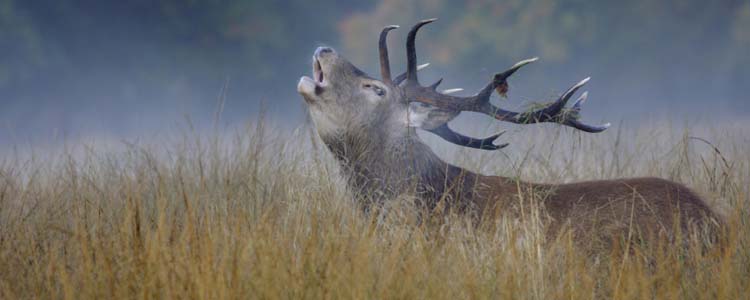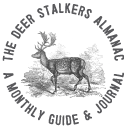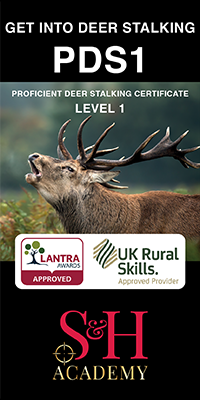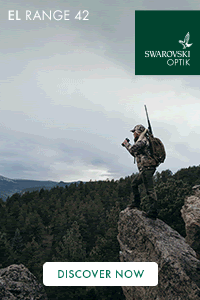Peter S Jones looks at why the 01st November is the most important date in the deer manager’s calendar.
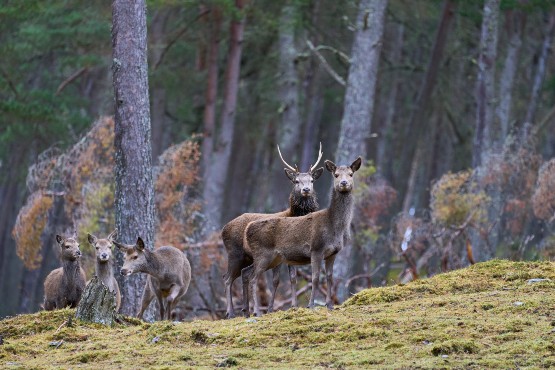
With the arrival of 21st October in Scotland and 1st November in England & Wales, deer management enters a new and critical chapter. The early autumn excitement of the rut gives way to something altogether more serious. This is where the real work of deer management begins. The pursuit of stag and buck may define the start of autumn, but it is now, with the arrival of the female season, that stalkers can finally start to shape populations.
In Scotland, while stags may now legally be taken year-round, the traditional season draws to a close at the end of October, and most well-managed estates still follow this practice and shift focus to hinds from the 21st October.
England & Wales: The Season is wide open
For those in England and Wales, the 1st of November marks the start of the season for females of all deer species, and critically, now runs alongside the open season for most males. With the sole exception of Roebuck, every deer in the landscape becomes fair game.
It’s a pivotal moment in the stalking calendar, the first real opportunity to influence herd structure in a meaningful way. While earlier efforts may have focused on males, true population management begins with the breeding females. Without addressing this core group, any attempt at long-term control is little more than window dressing.
Population Control Begins Now
Effective management means understanding that real impact starts with the females. On land where deer numbers are rising, and the pressure on crops or woodland is mounting, this is the time to act.
Targeting females allows for meaningful reductions, and in some cases, is essential to prevent long-term ecological or economic damage. Venison is a quality red meat and for many recreational stalkers, the female season also offers the opportunity to harvest deer at exceptional value, without the premium fees often attached to trophy animals.
Not All Grounds Are the Same
Of course, not all ground requires large culls. Where deer numbers are low or stalking is managed for leisure and observation, restraint is paramount. Over-shooting breeding females in such areas may have an impact that lasts several years, especially with territorial species like Roe.
So, while opportunity may now be plentiful, stalkers must consider the repercussions of their actions and cull with intent, not impulse
Deer Adjust Quickly
If you think the deer don’t notice the change in pressure, think again. The relaxed groups of does and hinds seen in October are suddenly alert, wary, and scarce. With more rifles in the field, deer behaviour changes overnight, and the challenge intensifies.
That’s where skill and patience come in. This isn’t just about taking more shots; it’s about taking the right ones. The change in pressure is immediate, and the deer feel it.
Take Care with Roebuck
A word of caution, by the end of the month, Roebuck are beginning to cast their antlers and may easily be mistaken for a doe. Mistakes are not only unlawful in England & Wales but can also be costly, due to the impact on next year’s Roebuck season. So don’t rush. Identify with certainty or let the deer move off.
In Summary
From the hill to the lowlands, November marks the most important period in the deer manager’s year. Whether you're a professional stalker or a recreational shooter, this is the time to make decisions that matter. The window is short and the work is vital.
The males may be gone, in practice, if not in law and the heady days of the rut begin to fade into memory, but now begins the season of strategy and good judgement as the season pivots from rut to responsibility.
If you'd lik eto learn how to manage deer, a great place top start is by taking the Proficient Deer Stalking Certificate Level 1 (PDS1) Follow thiss link to learn more: Proficient Deer Stalking Course - PDS1
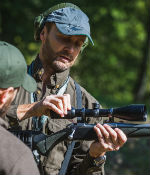 IN Season in England & Wales: Roe Doe, Fallow Doe & Fallow Buck, Sika Stag & Sika Hind, Red Stag & Red Hind, CWD Buck & CWD Doe, Muntjac Buck & Muntjac Doe.
IN Season in England & Wales: Roe Doe, Fallow Doe & Fallow Buck, Sika Stag & Sika Hind, Red Stag & Red Hind, CWD Buck & CWD Doe, Muntjac Buck & Muntjac Doe.
OFF Season in England & Wales: Roebuck.
In Season in Scotland: All deer.
(Left: Peter S Jones - editor)




